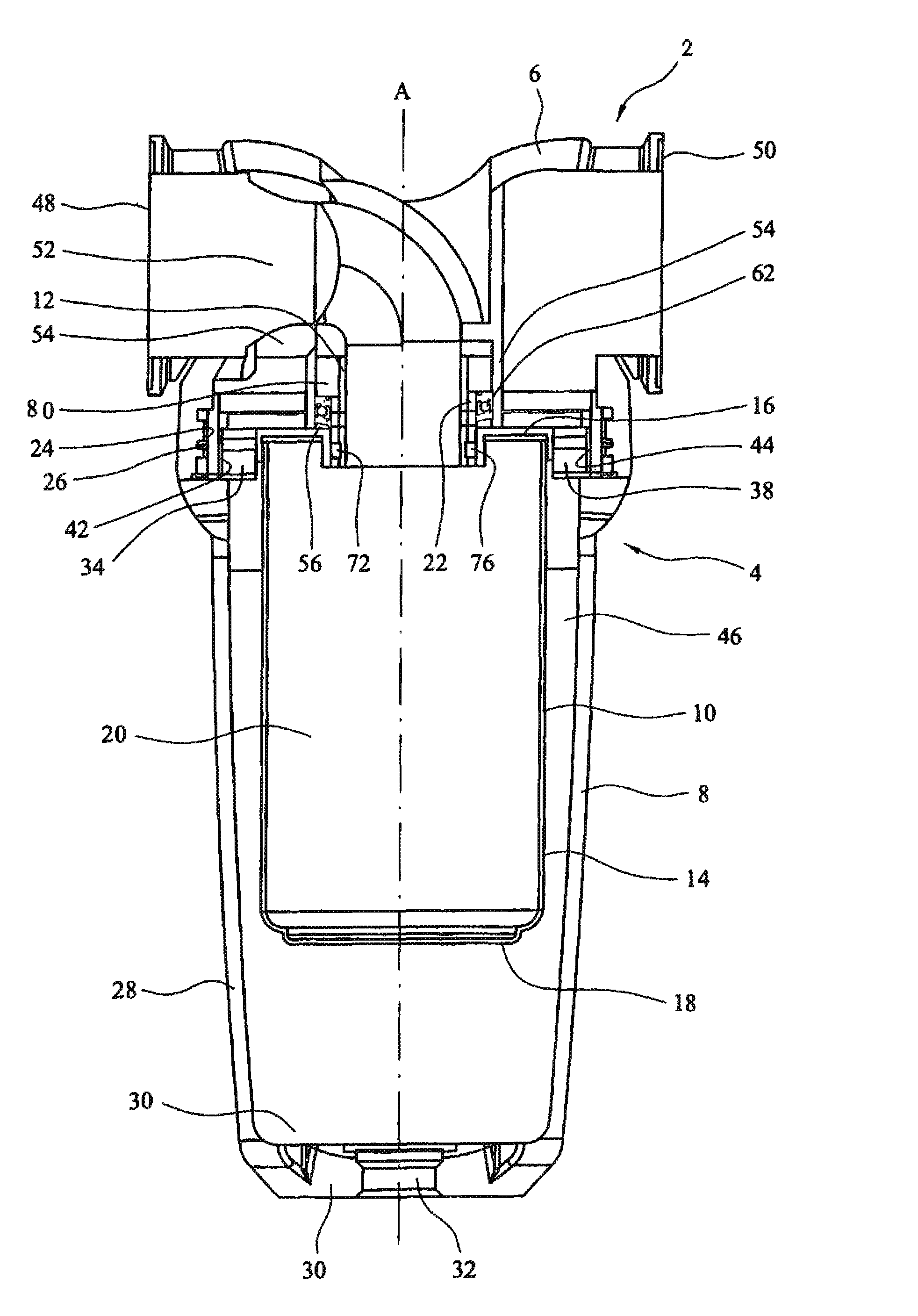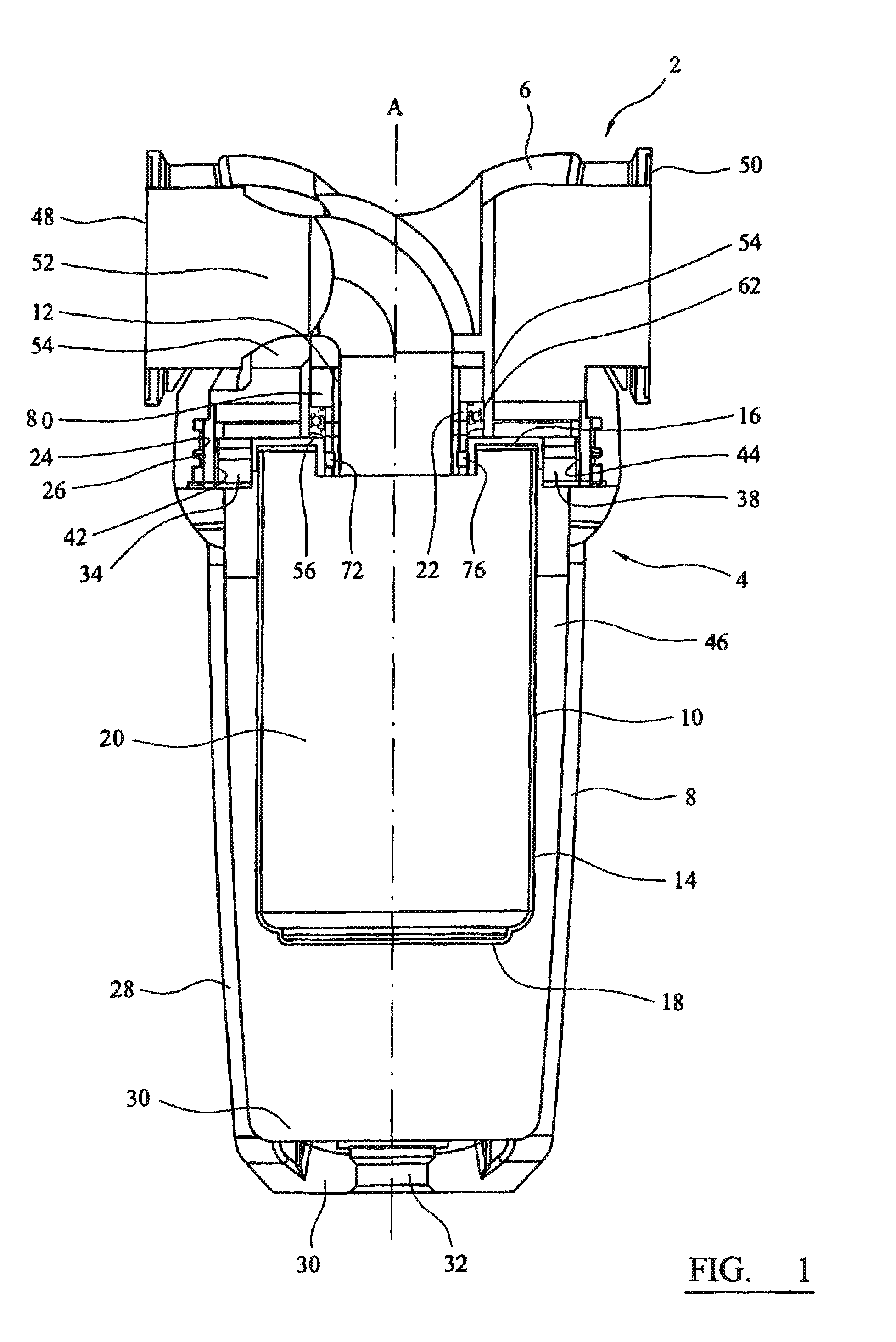Filter assembly
a filter and assembly technology, applied in the direction of cartridge filters, dispersed particle filtration, using liquid separation agents, etc., can solve the problems of significant risk, head and body breaking apart from each other, damage to apparatus or users close to the housing, etc., to reduce simple and cheaper mechanism, the effect of reducing the likelihood of misalignmen
- Summary
- Abstract
- Description
- Claims
- Application Information
AI Technical Summary
Benefits of technology
Problems solved by technology
Method used
Image
Examples
Embodiment Construction
[0057]Referring to the drawings, FIG. 1 shows a filter assembly 2 which comprises a housing 4, having a head part 6 and a body part 8, a filter element 10, and a flow controller 12. The head 6 and body 8 parts each have engagement formations in the form of co-operating screw threads 24, 26 which allow the head 6 and body 8 parts to be connected to one another and separated by relative rotation about axis A. The head part 6 has a head axis and the body part 8 has a body axis, each of which are co-axial with the axis A.
[0058]In the embodiment described, the filter element 10 is a filter element 10 which comprises a cylindrical wall section 14 formed from a filter medium, and top 16 and bottom 18 end caps. As best shown in FIGS. 2 to 4, the wall section 14 of the filter element 10 defines a hollow space 20 within it.
[0059]The top 16 and bottom 18 end caps are formed from a polymeric material. As will be understood, suitable polymeric materials include polyolefins (especially polyethyle...
PUM
| Property | Measurement | Unit |
|---|---|---|
| angle | aaaaa | aaaaa |
| angle | aaaaa | aaaaa |
| angle | aaaaa | aaaaa |
Abstract
Description
Claims
Application Information
 Login to View More
Login to View More - R&D
- Intellectual Property
- Life Sciences
- Materials
- Tech Scout
- Unparalleled Data Quality
- Higher Quality Content
- 60% Fewer Hallucinations
Browse by: Latest US Patents, China's latest patents, Technical Efficacy Thesaurus, Application Domain, Technology Topic, Popular Technical Reports.
© 2025 PatSnap. All rights reserved.Legal|Privacy policy|Modern Slavery Act Transparency Statement|Sitemap|About US| Contact US: help@patsnap.com



